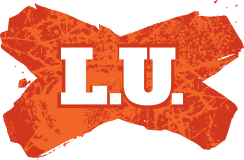TheDalek079
Bench
- Messages
- 4,432
Nothing has ever gripped the start of a NRL season like the Wing Affair, where young Rooster Riley Brown steamed in and dislocated Craig Wings shoulder. The uproar in the Souths camp is understandable, but the universal condemnation of Riley from most of society is not. People from all corners of Australia (and beyond) agreed that it was a cheap shot; many said that it was a pre-meditated attack to put Wing out of the game. Former South Sydney player Scott Sattler came out and said it was cowardly. On sites where comments can be posted, the public are one in their dislike of Riley and his tackle. How could all these people be so wrong?
Well, the answer is they judge the whole affair purely on the footage of the tackle. This is just folly. Do courts make their rulings based on one piece of evidence? You need more than footage of one tackle to make judgement on this issue. Instead, they merely watch the tackle on Wing and assume that is Rileys tackling technique. It is not. If they judged the incident after watching some other tackles in the match that Mr Brown made, their conclusion may be different. If you watch these other tackles, you can see that the intent is not to maim, but to gain valuable defensive metres. Two players hold the offensive player up, and Riley charges with his shoulder charge, forcing the ball-carrier backwards. With this momentum, Riley wraps his arm around the ball-carrier and drives him towards the goal line, gaining metres. This is the tackle. Not just a shoulder charge to cause injury. It is followed up with rushing the player back towards his own goal line.
Now, Wing admits that they started this tackle at the Roosters, so he should know all about it. He knows the true intent of the tackle. Thats why he hasnt joined in the accusations that its a cheap shot. With Tupou and Anasta holding him up, Wing clearly realised what was about to happen: he was to be driven backwards, losing metres. Not wanting to surrender these yards, he fights to the ground. Unfortunately, this means that Rileys shoulder charge wouldnt push Wing backwards; instead Wing would receive the full force of it. That is how Wing got injured: attempting to save yardage; not by some cowardly act of maiming.
Perhaps next time our experts should watch more before judging.
Well, the answer is they judge the whole affair purely on the footage of the tackle. This is just folly. Do courts make their rulings based on one piece of evidence? You need more than footage of one tackle to make judgement on this issue. Instead, they merely watch the tackle on Wing and assume that is Rileys tackling technique. It is not. If they judged the incident after watching some other tackles in the match that Mr Brown made, their conclusion may be different. If you watch these other tackles, you can see that the intent is not to maim, but to gain valuable defensive metres. Two players hold the offensive player up, and Riley charges with his shoulder charge, forcing the ball-carrier backwards. With this momentum, Riley wraps his arm around the ball-carrier and drives him towards the goal line, gaining metres. This is the tackle. Not just a shoulder charge to cause injury. It is followed up with rushing the player back towards his own goal line.
Now, Wing admits that they started this tackle at the Roosters, so he should know all about it. He knows the true intent of the tackle. Thats why he hasnt joined in the accusations that its a cheap shot. With Tupou and Anasta holding him up, Wing clearly realised what was about to happen: he was to be driven backwards, losing metres. Not wanting to surrender these yards, he fights to the ground. Unfortunately, this means that Rileys shoulder charge wouldnt push Wing backwards; instead Wing would receive the full force of it. That is how Wing got injured: attempting to save yardage; not by some cowardly act of maiming.
Perhaps next time our experts should watch more before judging.

